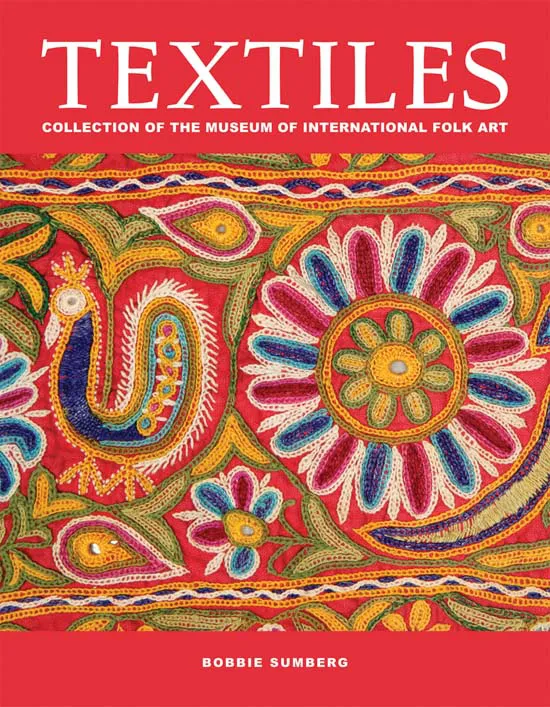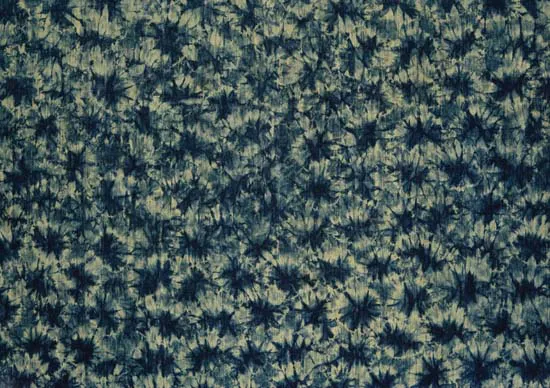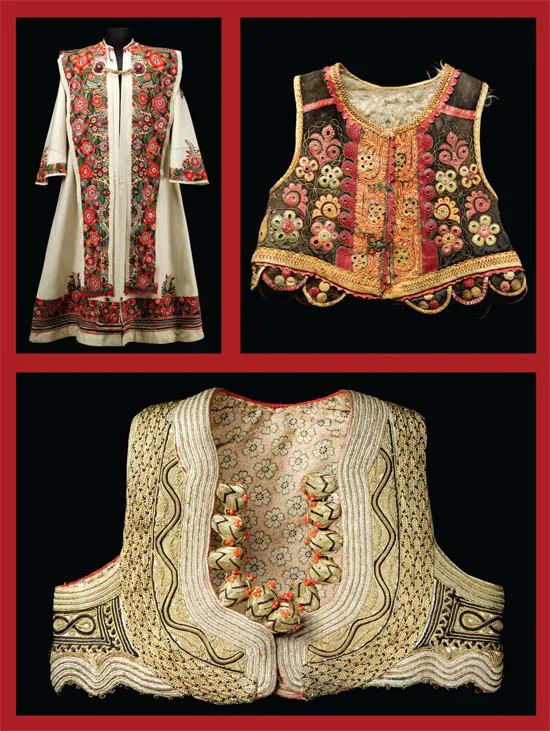
eBook - ePub
Textiles
Bobbie Sumberg
This is a test
Condividi libro
- 250 pagine
- English
- ePUB (disponibile sull'app)
- Disponibile su iOS e Android
eBook - ePub
Textiles
Bobbie Sumberg
Dettagli del libro
Anteprima del libro
Indice dei contenuti
Citazioni
Informazioni sul libro
Textiles explores the cultural meaning and exquisite workmanship found in the Museum of International Folk Art's vast collection that spans centuries and includes pieces from seventy countries around the world. Handcrafted work in beautiful, vivid colors typifies the clothing, hats, robes, bedding, and shoes that represent the lives and passions of the people who created and used them.
Domande frequenti
Come faccio ad annullare l'abbonamento?
È semplicissimo: basta accedere alla sezione Account nelle Impostazioni e cliccare su "Annulla abbonamento". Dopo la cancellazione, l'abbonamento rimarrà attivo per il periodo rimanente già pagato. Per maggiori informazioni, clicca qui
È possibile scaricare libri? Se sì, come?
Al momento è possibile scaricare tramite l'app tutti i nostri libri ePub mobile-friendly. Anche la maggior parte dei nostri PDF è scaricabile e stiamo lavorando per rendere disponibile quanto prima il download di tutti gli altri file. Per maggiori informazioni, clicca qui
Che differenza c'è tra i piani?
Entrambi i piani ti danno accesso illimitato alla libreria e a tutte le funzionalità di Perlego. Le uniche differenze sono il prezzo e il periodo di abbonamento: con il piano annuale risparmierai circa il 30% rispetto a 12 rate con quello mensile.
Cos'è Perlego?
Perlego è un servizio di abbonamento a testi accademici, che ti permette di accedere a un'intera libreria online a un prezzo inferiore rispetto a quello che pagheresti per acquistare un singolo libro al mese. Con oltre 1 milione di testi suddivisi in più di 1.000 categorie, troverai sicuramente ciò che fa per te! Per maggiori informazioni, clicca qui.
Perlego supporta la sintesi vocale?
Cerca l'icona Sintesi vocale nel prossimo libro che leggerai per verificare se è possibile riprodurre l'audio. Questo strumento permette di leggere il testo a voce alta, evidenziandolo man mano che la lettura procede. Puoi aumentare o diminuire la velocità della sintesi vocale, oppure sospendere la riproduzione. Per maggiori informazioni, clicca qui.
Textiles è disponibile online in formato PDF/ePub?
Sì, puoi accedere a Textiles di Bobbie Sumberg in formato PDF e/o ePub, così come ad altri libri molto apprezzati nelle sezioni relative a Design e Fashion Design. Scopri oltre 1 milione di libri disponibili nel nostro catalogo.
Informazioni
Argomento
DesignCategoria
Fashion Design
Introduction
Textiles and Dress in the Museum of International Folk Art
The Museum of International Folk Art was founded and given to the state of New Mexico by Florence Dibell Bartlett and opened to the public in 1953. Over the door was engraved the motto “The art of the craftsman is a bond between the peoples of the world.” What better art to demonstrate the universality and particularity of human culture than textile art? When Bartlett gave her personal collection of nearly three thousand pieces to New Mexico, approximately 75 percent of the collection was textiles and items of dress, including garments, hats, shoes, and jewelry.
Many museums collect textiles and dress, but these materials rarely take center stage. The Museum of International Folk Art prioritizes these materials, realizing they are the art of a people in a profound sense, making concrete a culture’s values, aesthetics, and ideas about the cosmos as well as where humans, collectively and individually, fit in the world.
Numerous aspects of history and culture are studied through the production and use of textiles, one of the fascinating characteristics of this material. Gender roles within a family and within a society or culture are usually played out when cloth is made and worn, beginning with the planting of a seed or the raising of an animal. It’s easy to look at a woman spinning or embroidering and think that textile production is exclusively women’s work, but there is so much more to the topic of gender and the production of textiles than that. Each piece in the museum’s collection tells a complex story of the people who made and used it.
Take, for instance, the tie-dyed cotton cloth from Côte d’Ivoire, below. It was collected in the mid-nineteenth century and provides an excellent example of pre-colonial gender roles related to textile production. In central Côte d’Ivoire, where this cloth might have been made, young men cleared the fields of brush; women then planted the cotton seeds among the other crops. When the cotton was ready, everyone harvested the white or naturally brown bolls. Then it was up to the females of the household to deseed, card, and spin the fiber into yarn and dye it if desired. The yarn was given to a male member of the family to weave into long strips that were sewn together to make a cloth. The size of the cloth was determined by the number and length of strips; cloths for men were bigger than cloths for women. The cloth was then given back to the female head of the household. She decided who received it or if it was to be sold or used for a funeral gift. Men and women worked together and were expected to each do their parts of the process, which were equally important but not the same.[1]

Tie-dyed cotton cloth from Côte d’Ivoire.
Where women are secluded inside the household, the needle arts have often flourished. A needle, a hoop or frame, and a selection of colored threads are all that is needed to create something beautiful that not only demonstrates a woman’s skill but also implies the correctness of her upbringing. Portable embroidery has often constituted a primary social activity for unmarried girls preparing their trousseaus and who are prohibited from contact with the world of men.
Making and embellishing textiles can be a powerful tool of socialization and a reflection of cultural values. The sight of men and women in the Andes spinning with a drop spindle while walking sends a strong message about being productive and not wasting a moment. Young girls learning to weave at a back strap loom in southern Mexico kneel quietly at the loom. They are not only learning a skill but are also learning that to be a woman is to be patient, still, and calm in comportment.
As with gender roles, economic roles are not always so straightforward. There is some—but only limited—truth to the assumption that women produced textiles in the home for use in the home while men labored in commercial workshops making textile products for sale. Like the chef/cook—male/female dichotomy, there is limited truth in this generalization. Female spinners, weavers, and needleworkers have always participated in the market economy, whether working inside or outside of the home. Young New England farm women, who had been weaving cotton cloth at home on contract, were recruited to work in the textile mills in Massachusetts at the start of the Industrial Revolution around 1815.[2] Even when the cultural ideal insists that women are isolated from the marketplace, their earning ability has helped sustain their families. What might be true for wealthy and upper-class women doesn’t necessarily apply to families struggling to keep body and soul together.
On the other hand, some types of textile work were considered too heavy or difficult for a woman to manage. In the countries of Central and Eastern Europe, embroidery on sheepskin, leather, and fulled wool garments, such as those at below, was the domain of professional male embroiderers. These garments were produced entirely in a workshop or professional setting as the materials used required more technical skills and equipment than was found in the home. The irony is that the weight of the clothing worn by women in this part of Europe and the physicality and repetitiveness of the household chores and farming activities women were expected to do ensured that they were very strong!

Embroidery on sheepskin, leather, and fulled wool garments was the domain of male embroiderers.
Different fibers originated in specific parts of the world—cotton in India, Africa, and Mesoamerica; silk in China; wool in the Eastern Mediterranean; and flax for linen in Northern Europe and Egypt. Trad...